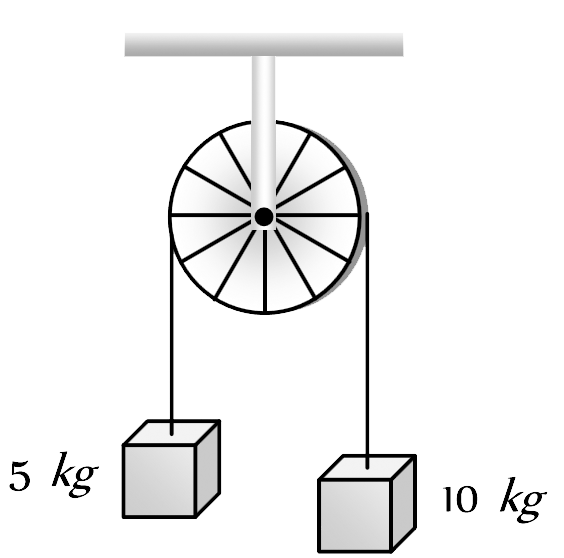A body of mass 10kg is moving with a constant velocity of 10m/s. When a constant force acts for 4 seconds on it, it moves with a velocity 2m/sec in the opposite direction. The acceleration produced in it is Solution in Gujrati
3m/s2
−3m/s2
0.3m/s2
−0.3m/s2
The correct Answer is:B
a=−2−104=−124=−3m/s2
Topper's Solved these Questions
- NEWTONS LAWS OF MOTIONBOOK - ALLEN CHAPTER - NEWTONS LAWS OF MOTIONEXERCISE - EXERCISE-III
28 Videos
- NEWTONS LAWS OF MOTIONBOOK - ALLEN CHAPTER - NEWTONS LAWS OF MOTIONEXERCISE - EXERCISE-I
52 Videos
- NEWTON'S LAWS OF MOTION & FRICTIONBOOK - ALLEN CHAPTER - NEWTON'S LAWS OF MOTION & FRICTIONEXERCISE - EXERCISE (JA)
4 Videos
- RACEBOOK - ALLEN CHAPTER - RACEEXERCISE - Basic Maths (Wave Motion & Dopplers Effect) (Stationary waves & doppler effect, beats)
25 Videos
Similar Questions
Assertion: The driver in a vechicle moving with a constant speed on a straight road is in a non-inertial frame of referance.
Reason: A reference frame in which Newton's laws of motion are applicable is non-inertial.
View SolutionUSS 150) Two masses of 5 kg and 10 kg are connected to a pulley as shown. What will be the acceleration of the system (g= acceleration due to gravity)

View SolutionA piece of wire is bent in the shape of a parabola y=kx2 (y-axis vertical) with a bead of mass m on it. The bead can slide on the wire without friction. It stays at the lowest point of the parabola when the wire is at rest. The wire is now accelerated parallel to the x-axis with a constant acceleration a. The distance of the new equilibrium position of the bead, where the bead can stay at rest with respect to the wire, from the y-axis is:
View SolutionThe frequency of a radar is 780 MHz. After getting reflected from an approaching aeroplane, the apparent frequency is more than the actual frequency by 2.6 kHz. The aeroplane has a speed of
View SolutionA body of mass 1.5kg moving with a velocity of 10m/s encounters another body of mass 2.5kg moving in opposite direction with a velocity of 16m/s, and they stick to eachother. What is the velocity of combination?
View SolutionThe velocity of a body moving with a uniform acceleration of 2m//sec^(2) is 10m//sec . Its velocity after an interval of 4sec is
View SolutionA constant force acts on a body of mass 10 g moving with a velocity of 500 ms^(-1) . The body is found to move with same velocity but in the opposite direction after 10 s . Calculate the magnitude of the force .
View SolutionAn object is moving velocity 10ms−1 . A constant force acts for 4 s object and given it a speed of 2ms−1 in opposite direction. The acceleration produced is
View SolutionA constant force F acts for 1 sec, on a body of mass 1kg moving with perpendicular to its initial velocity, then
View SolutionAn object of mass 10 kg is moving with an initial velocity of 10 m s^(-1) . A constant force acts for 4 s on the object giving it a speed of 2 m s^(-1) in the opposite direction. Find the acceleration and force.
View SolutionA body of mass 0.5 kg is moving with a velocity of 2m/s. When a constant force of x newton acts on its fro 2s, its velocity becomes 3m/s. What is the value of x?
View SolutionAn object of mass 10kg moves at a constant speed of 10 ms−1. A constant force, that acts for 4 sec on the object, gives it a speed of 2ms−1 in opposite direction. The force acting on the object is :
View SolutionCan there be any change in direction of the velocity of a body moving under a constant acceleration?
View SolutionA vehicle of mass 10kg is moving with a velocity of 5ms−1 .To stop it in 1/10 sec the required force in opposite direction is
View SolutionAn object is moving velocity 10 ms^(-1) . A constant force acts for 4 s object and given it a speed of 2 ms^(-1) in opposite direction. The acceleration produced is
View Solution
